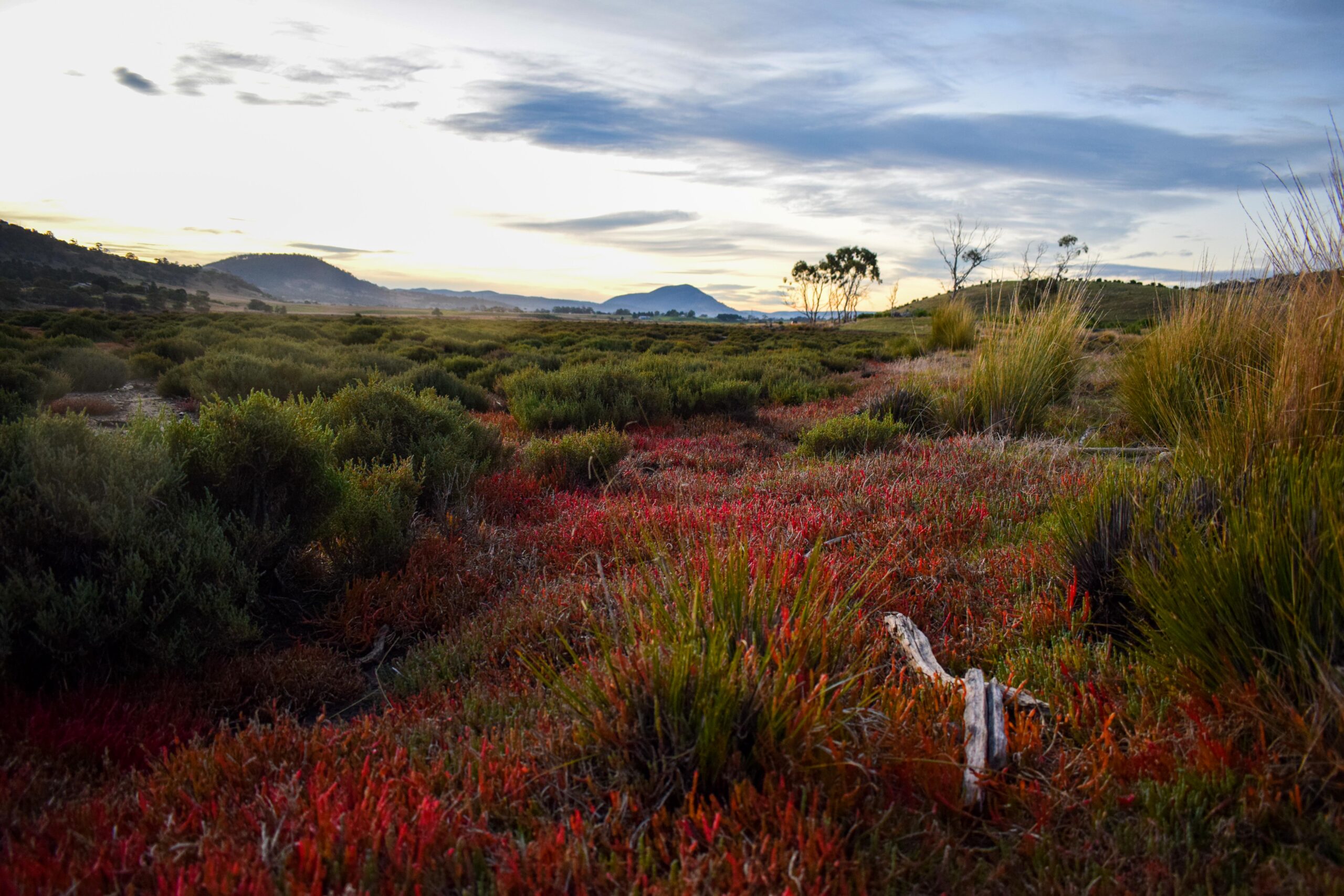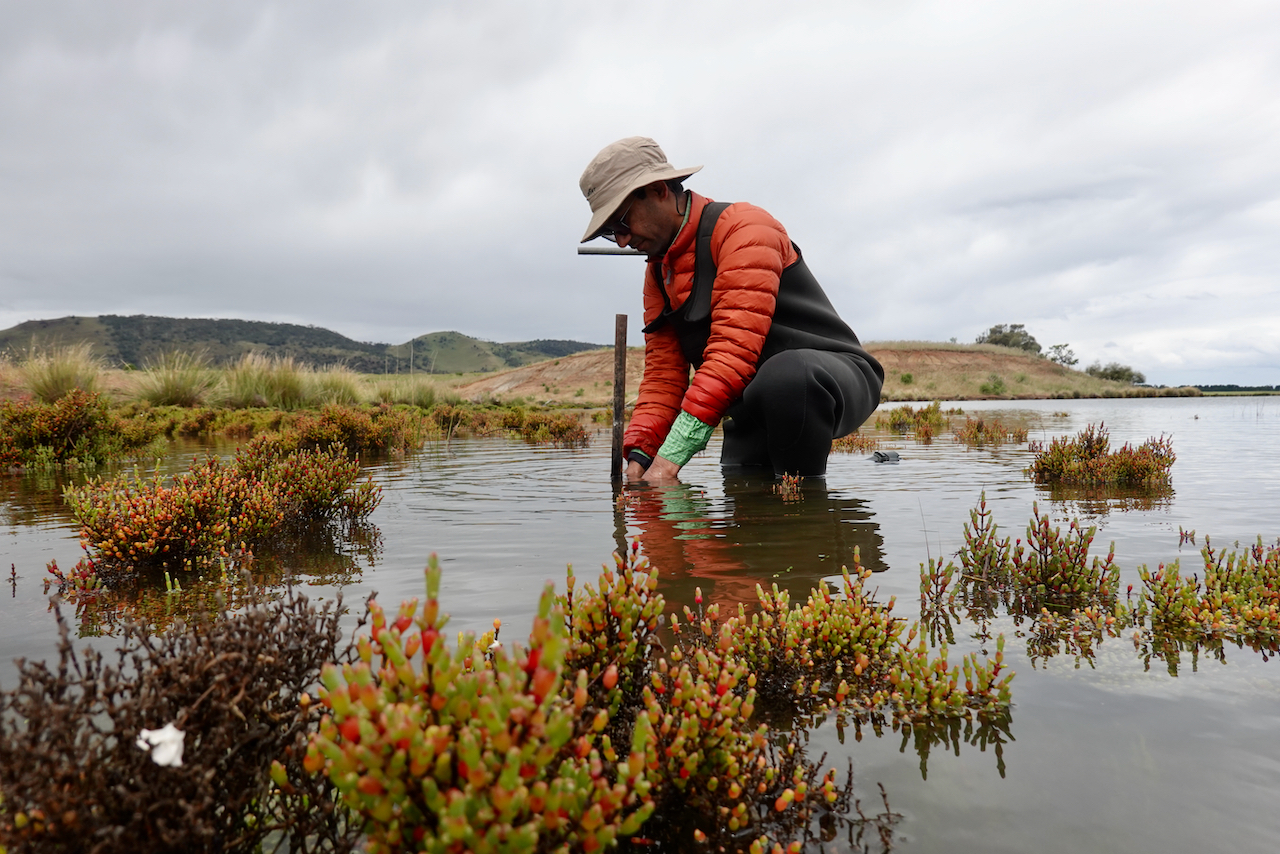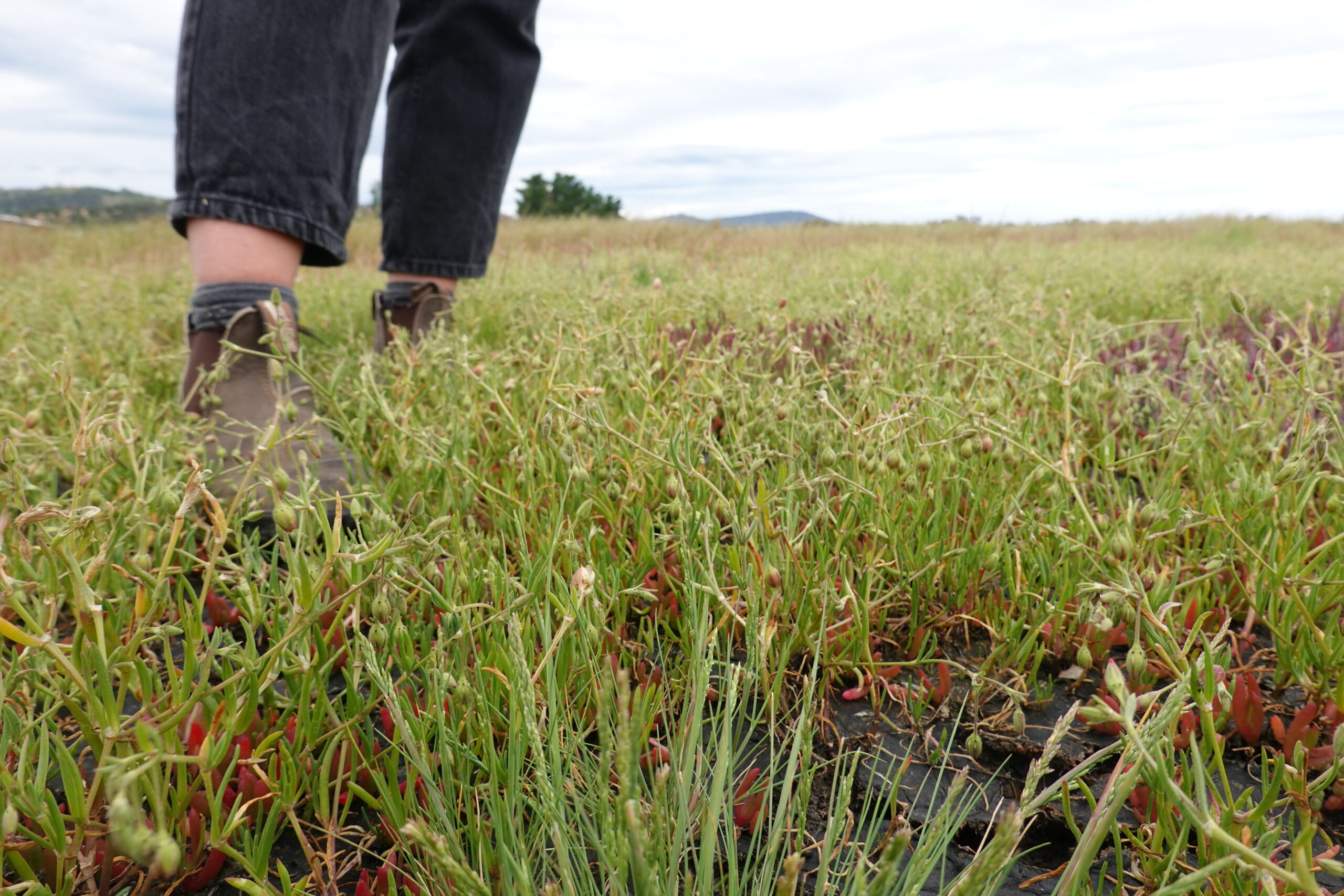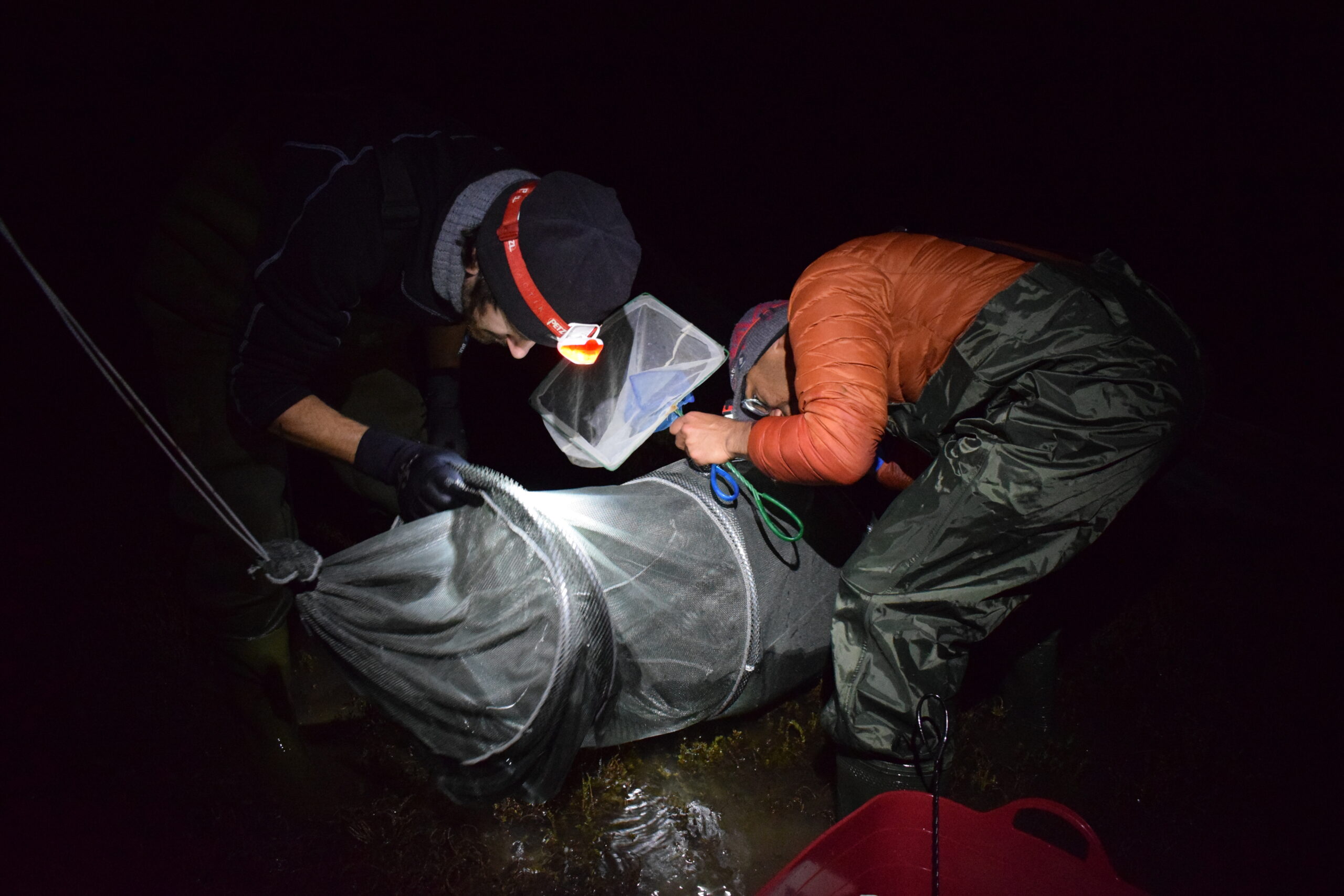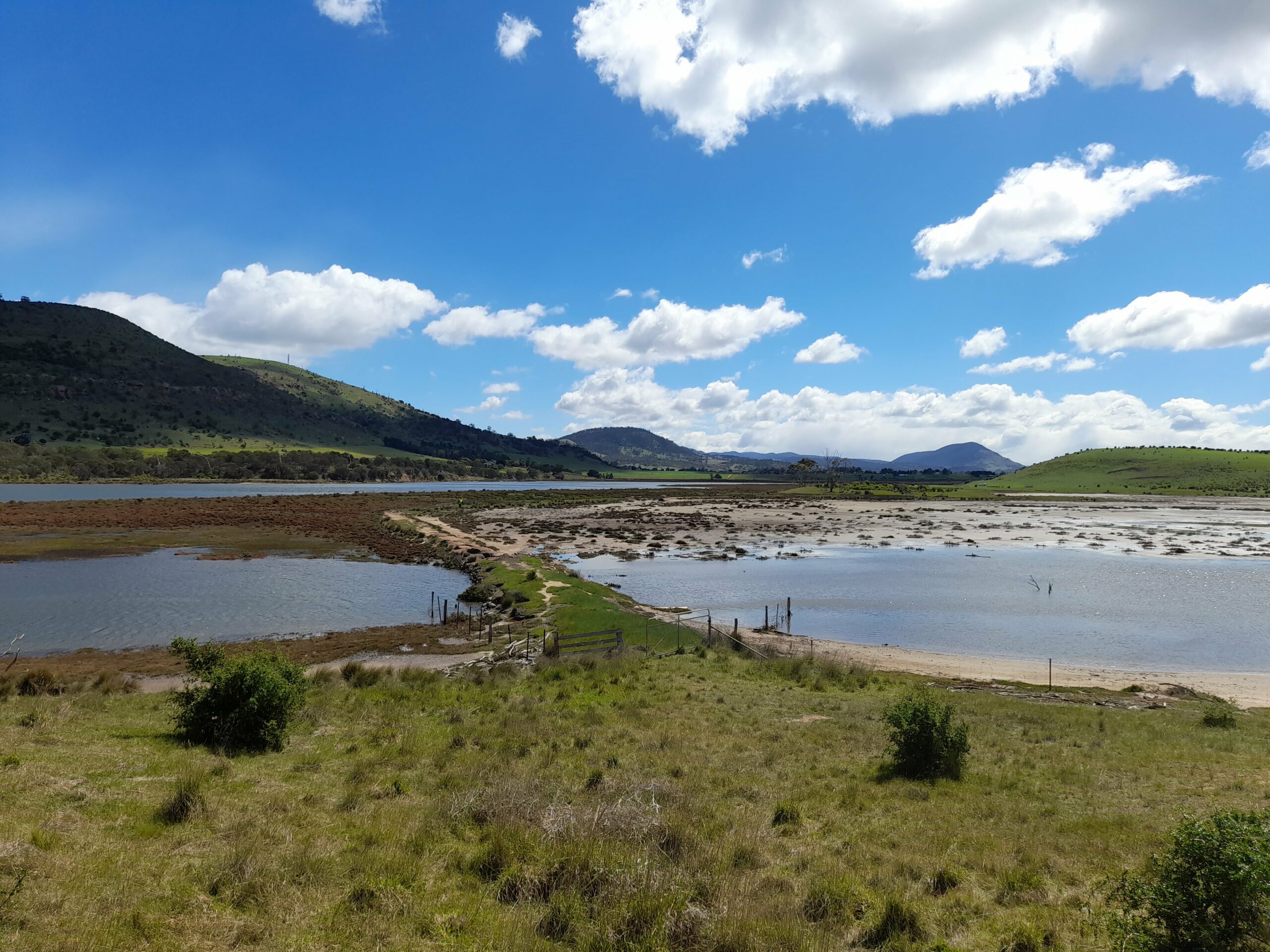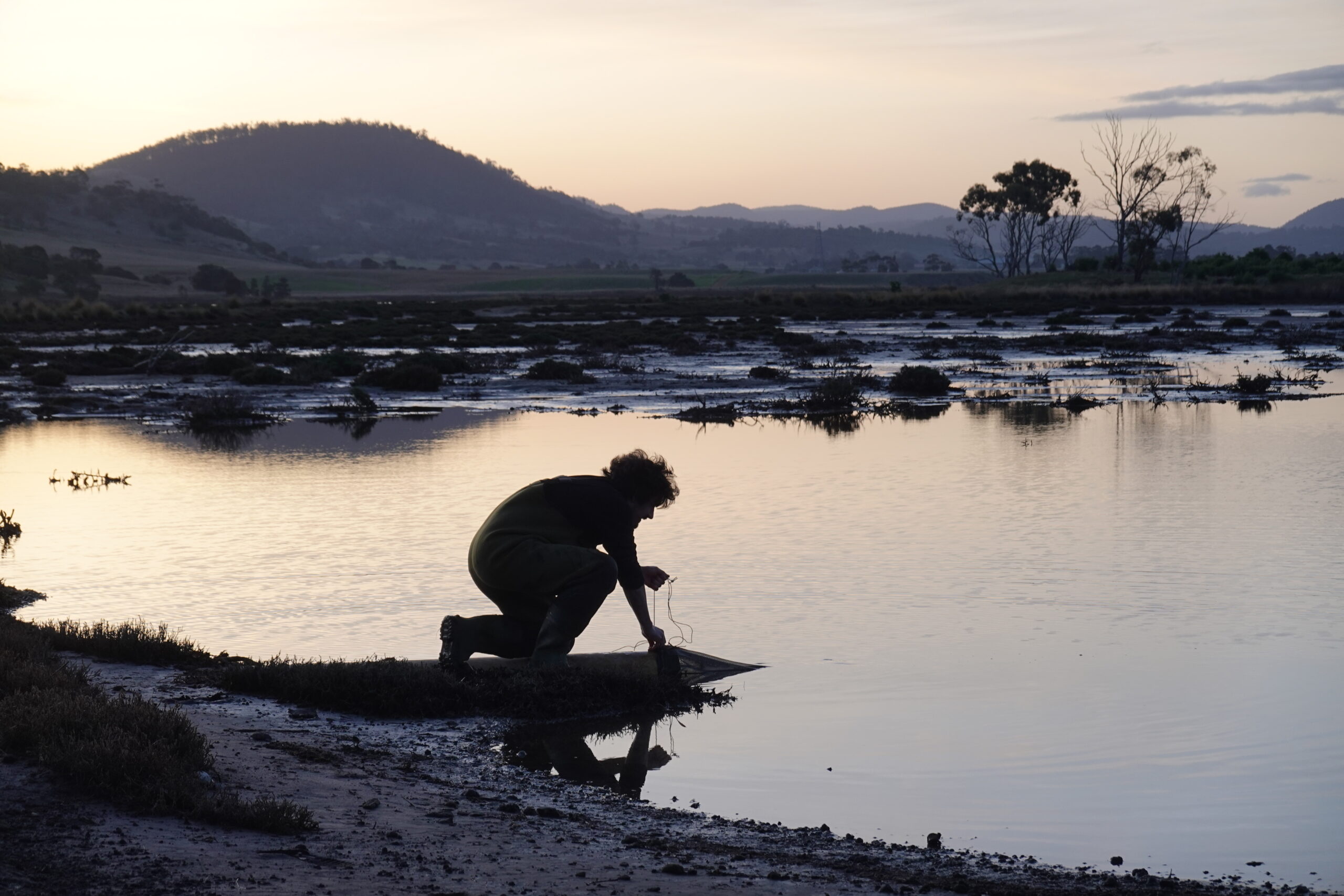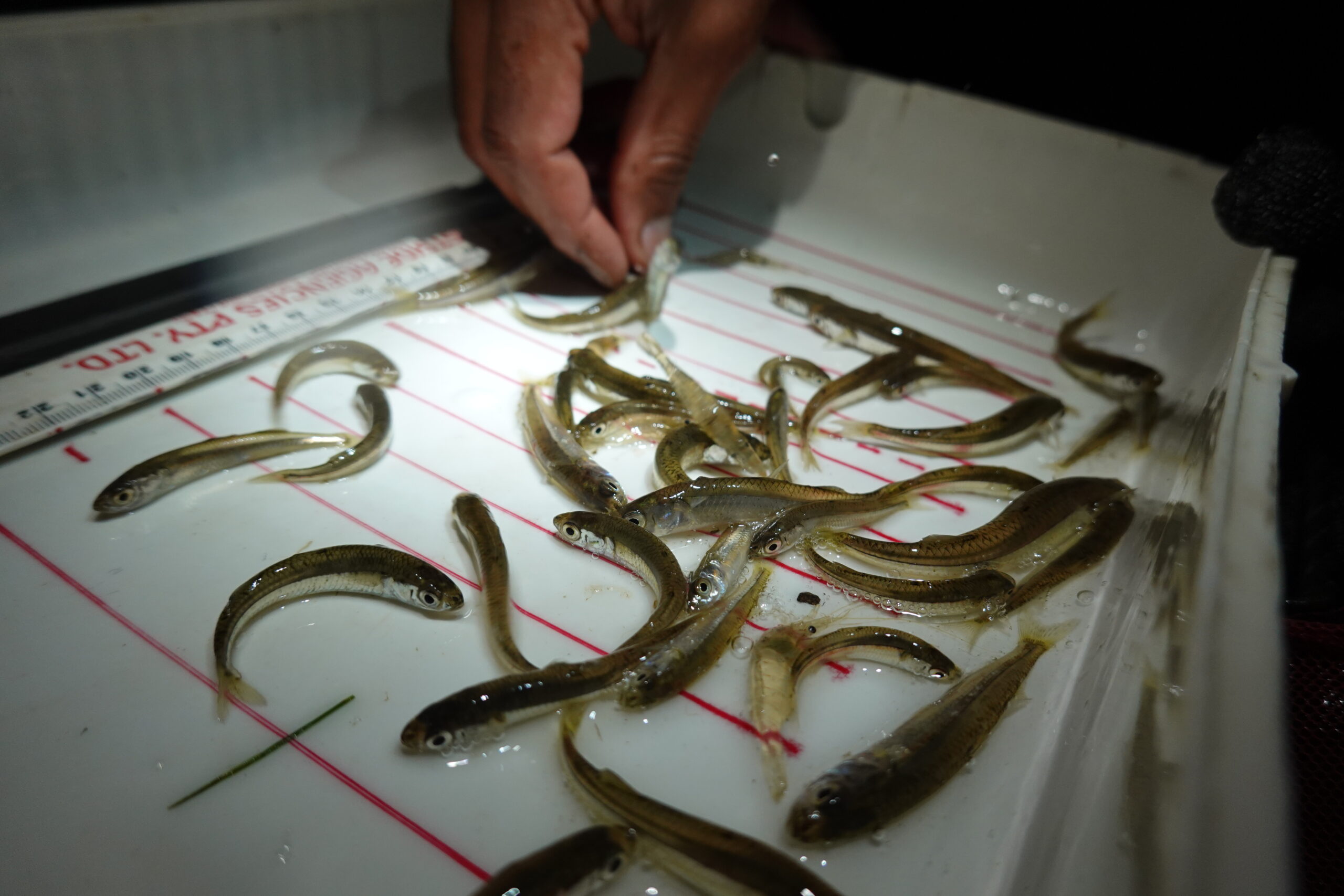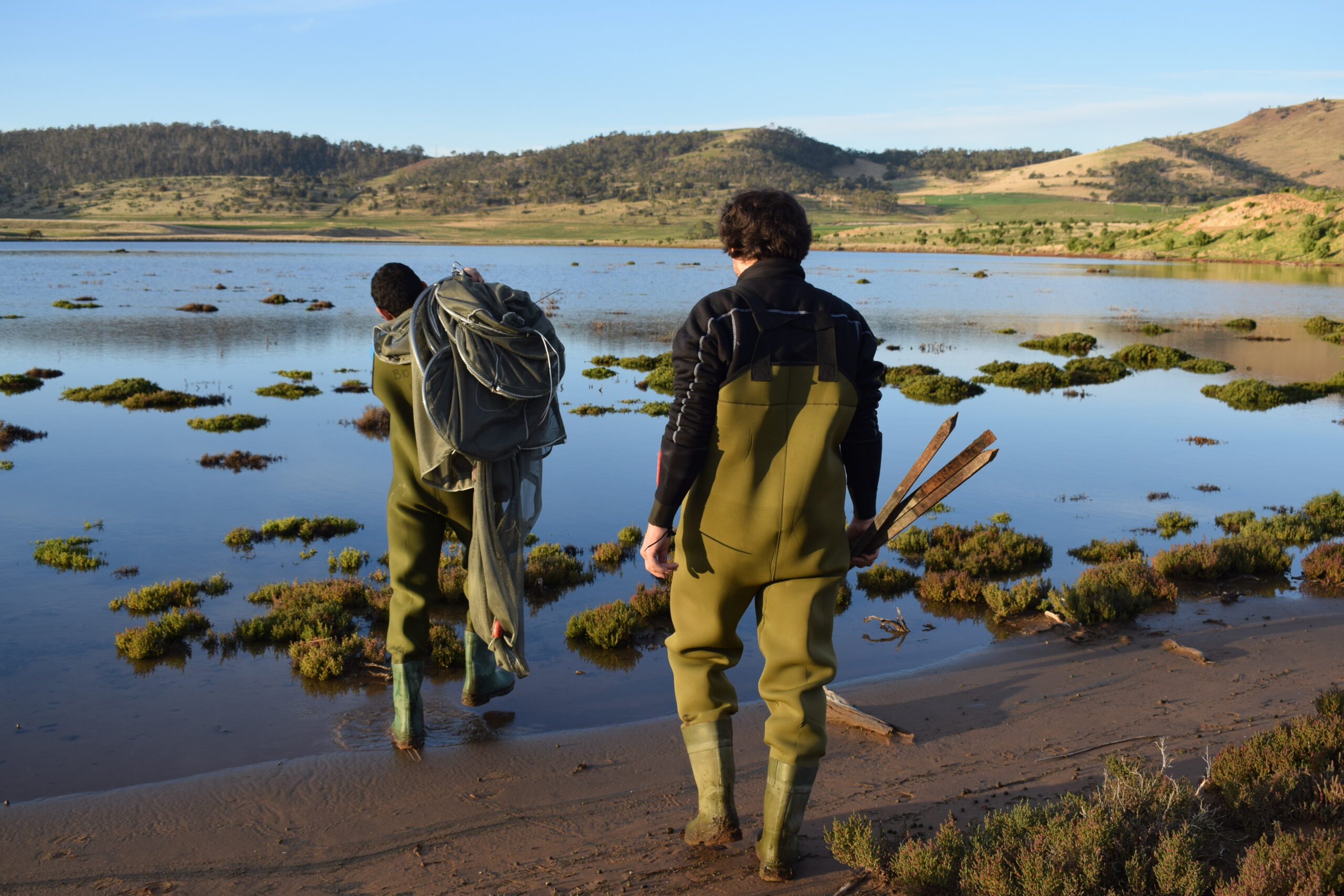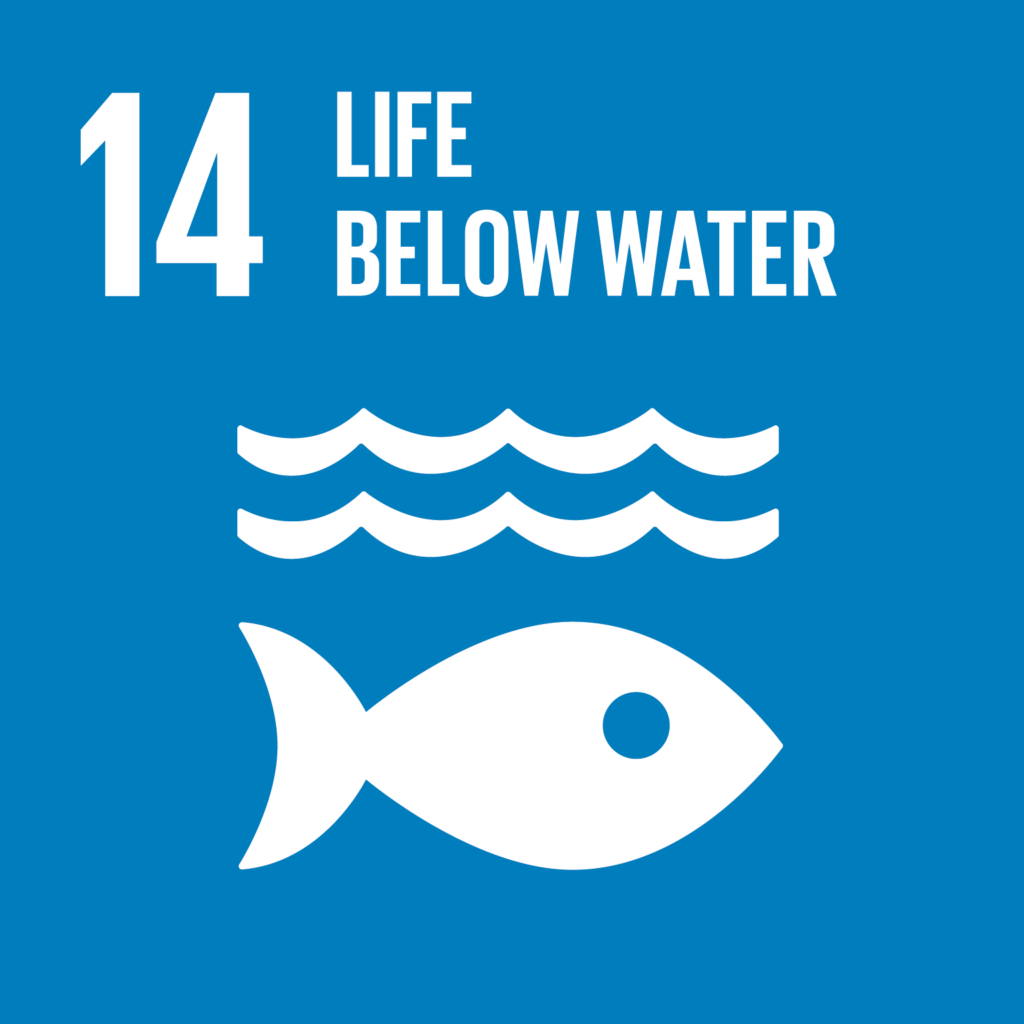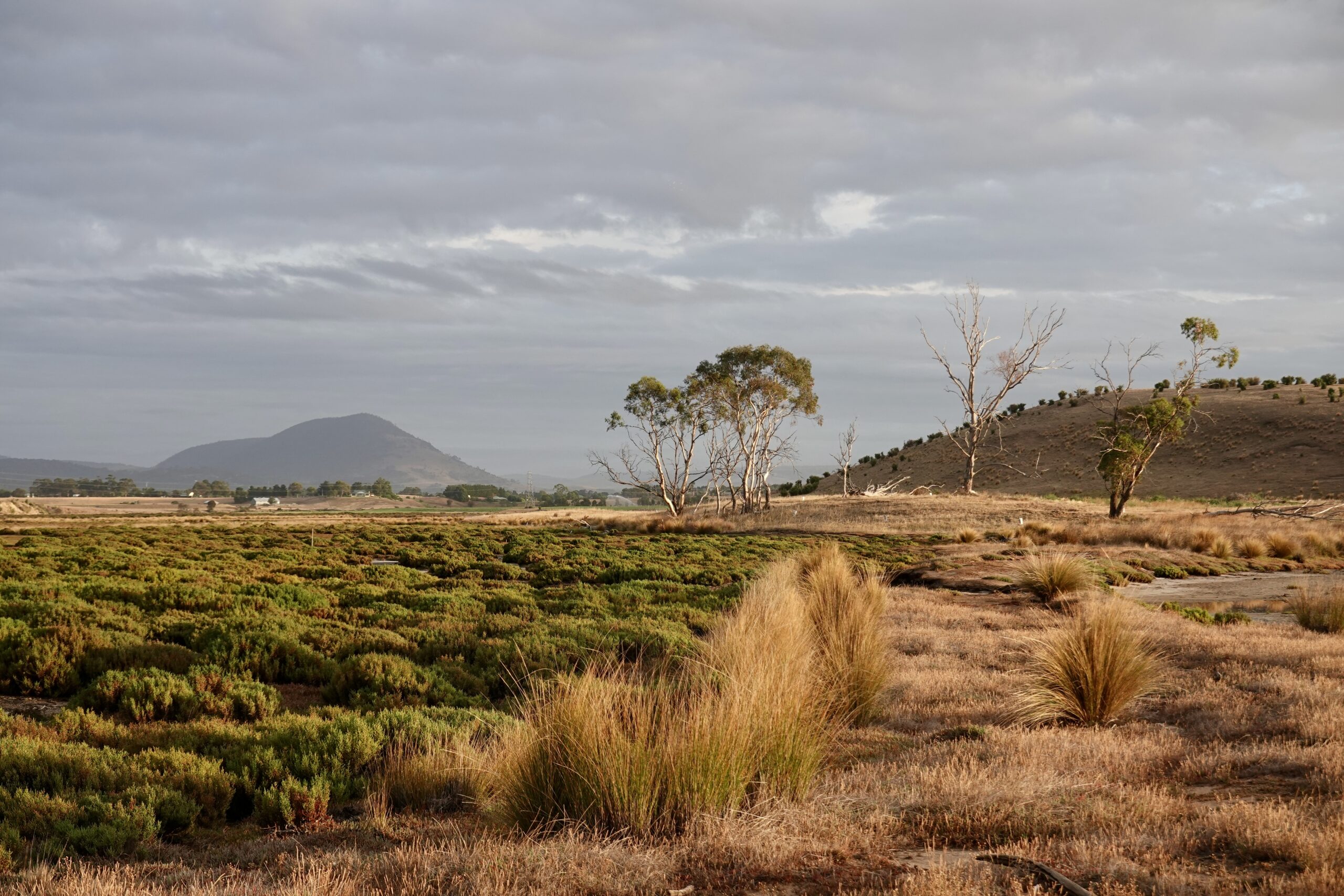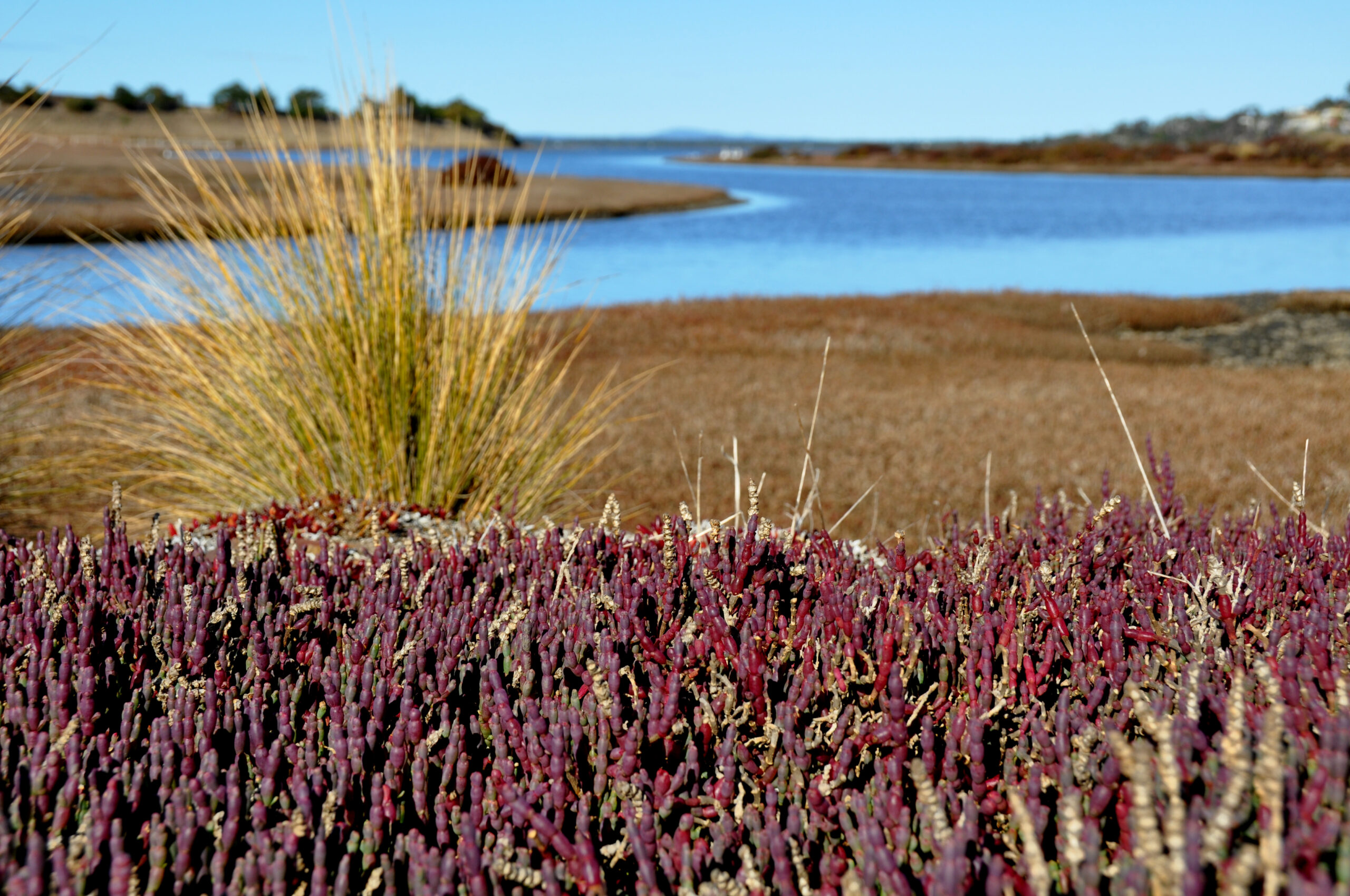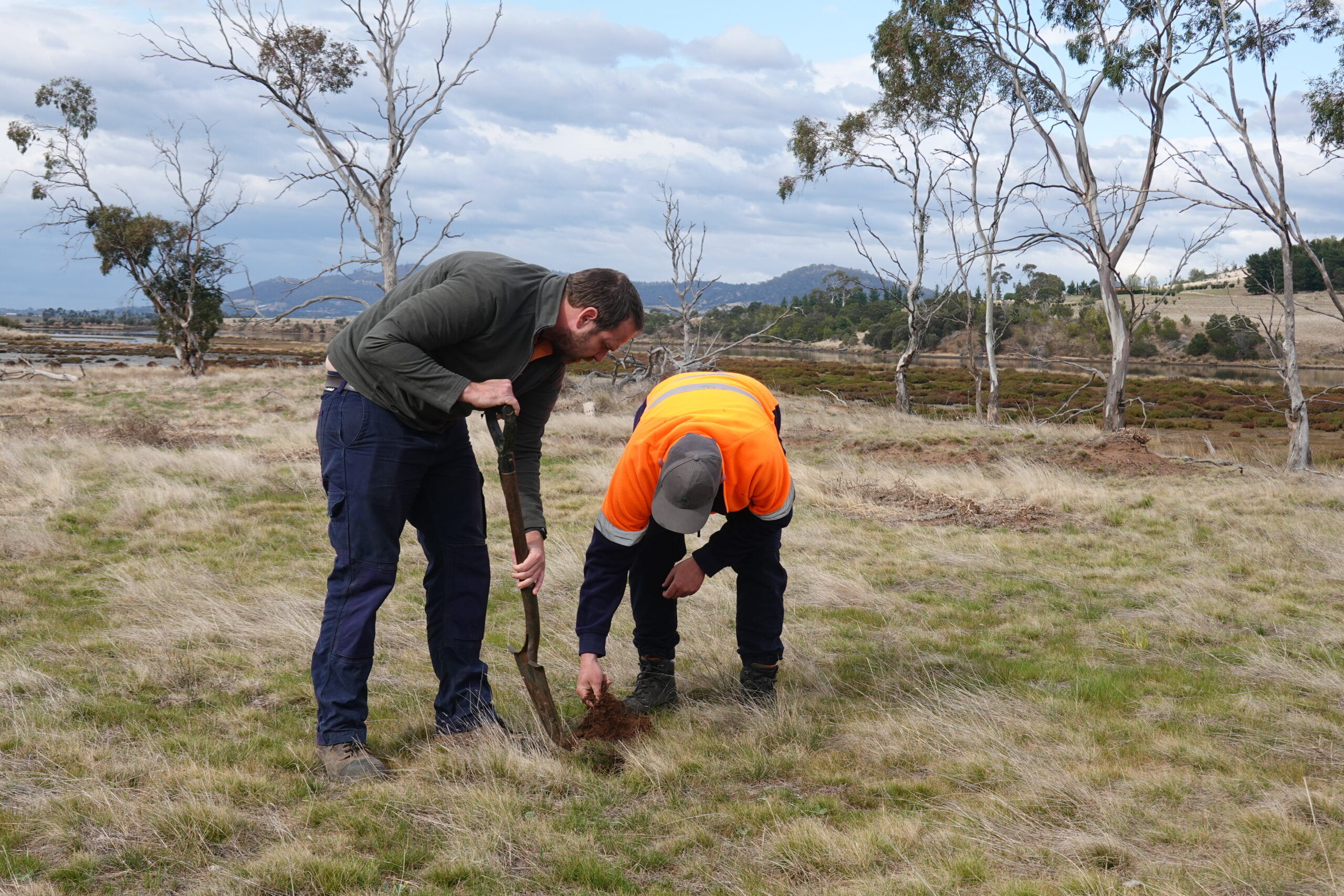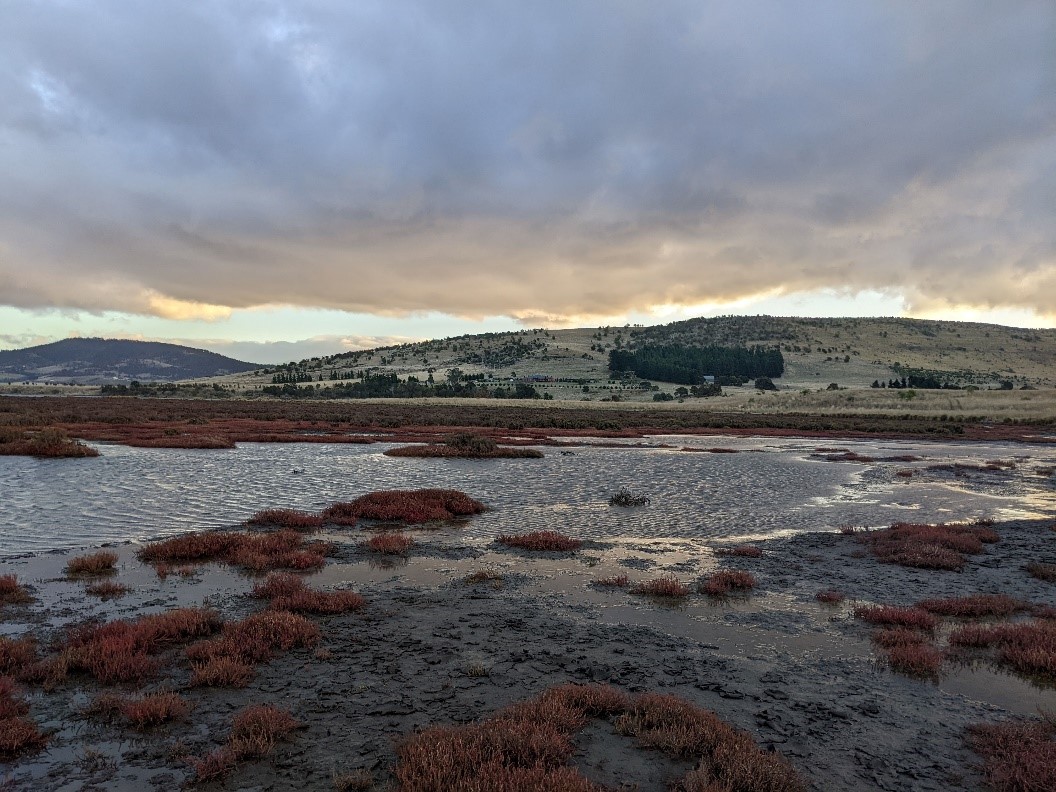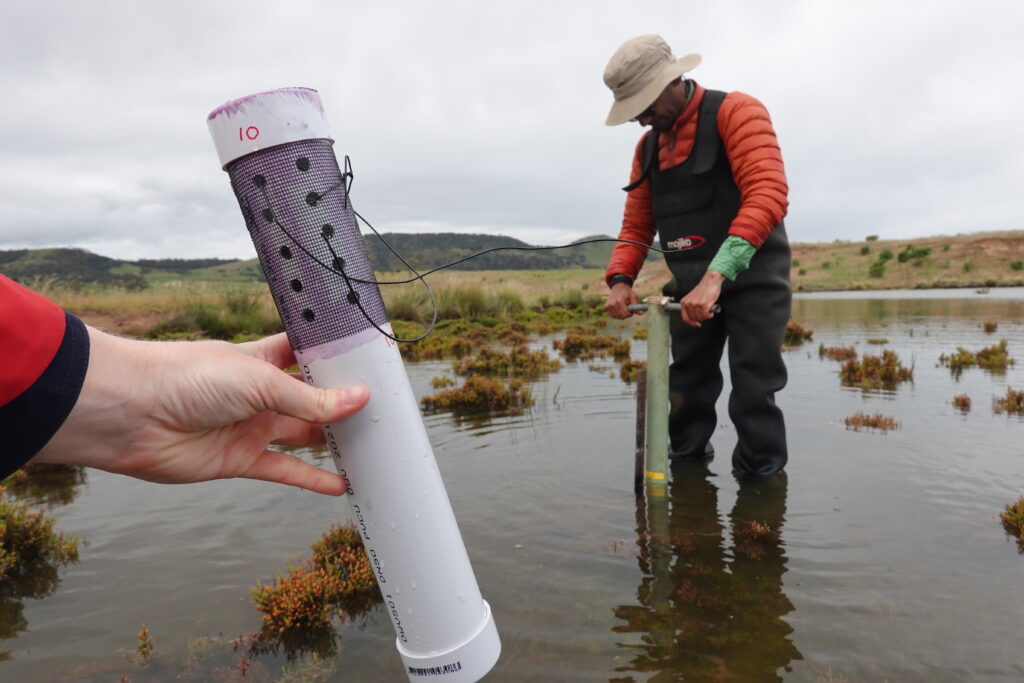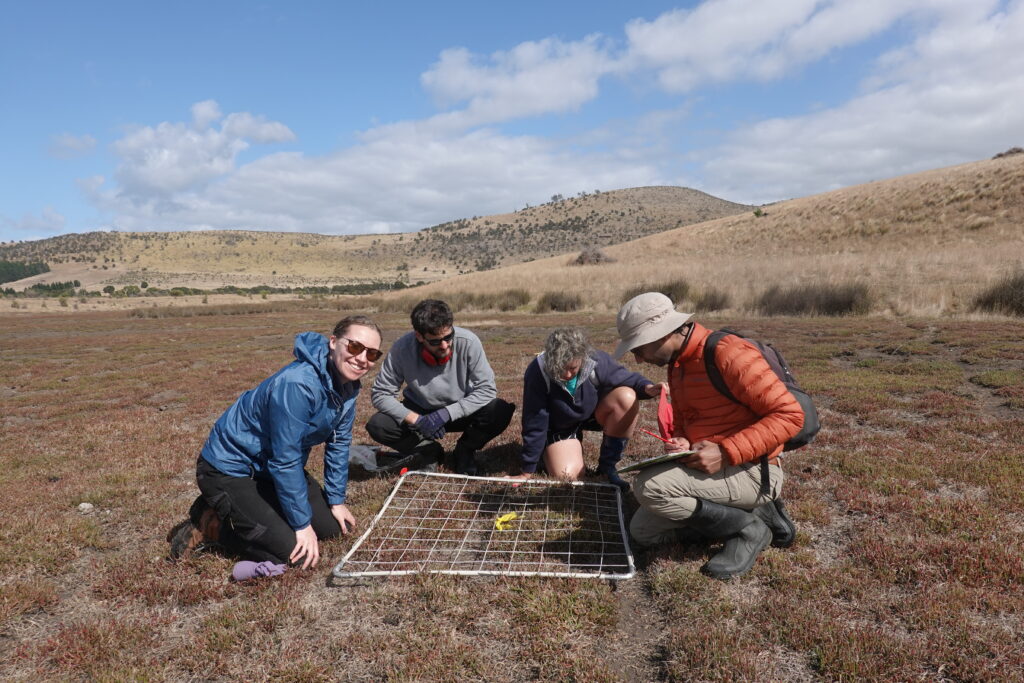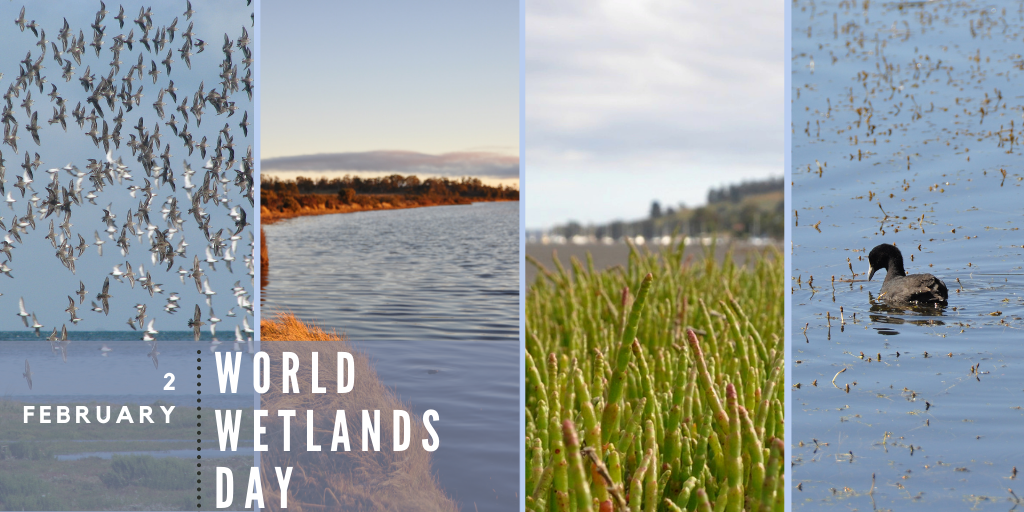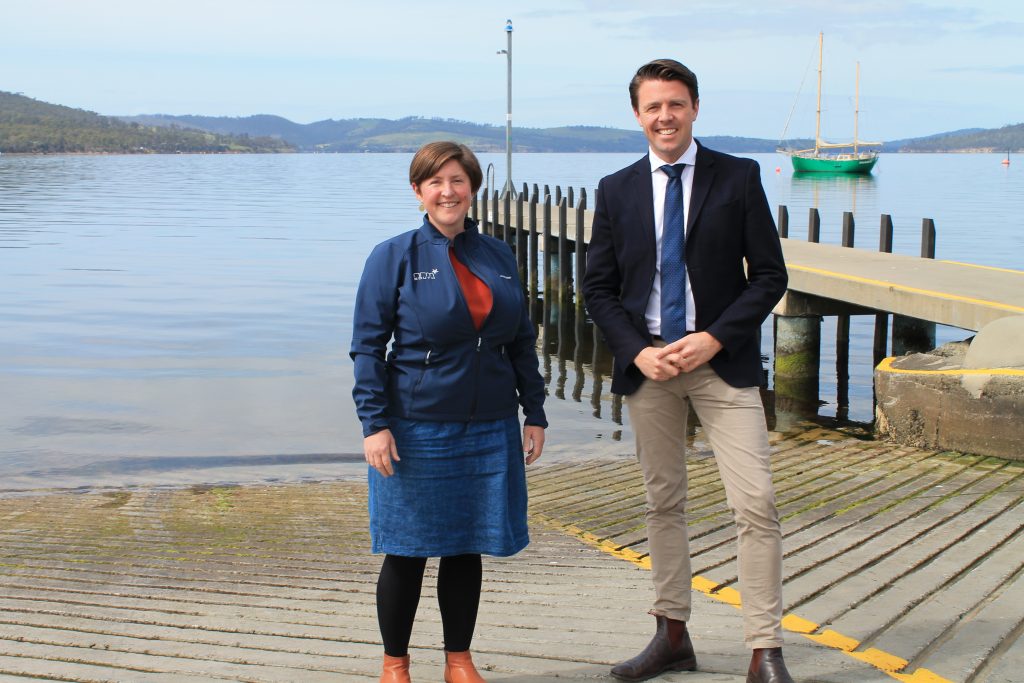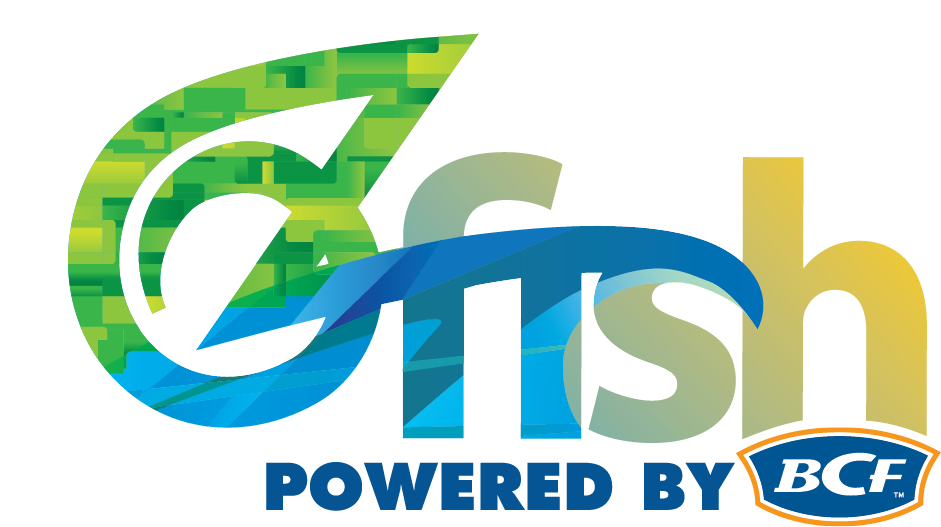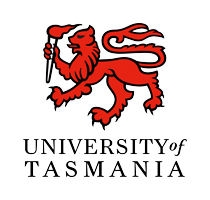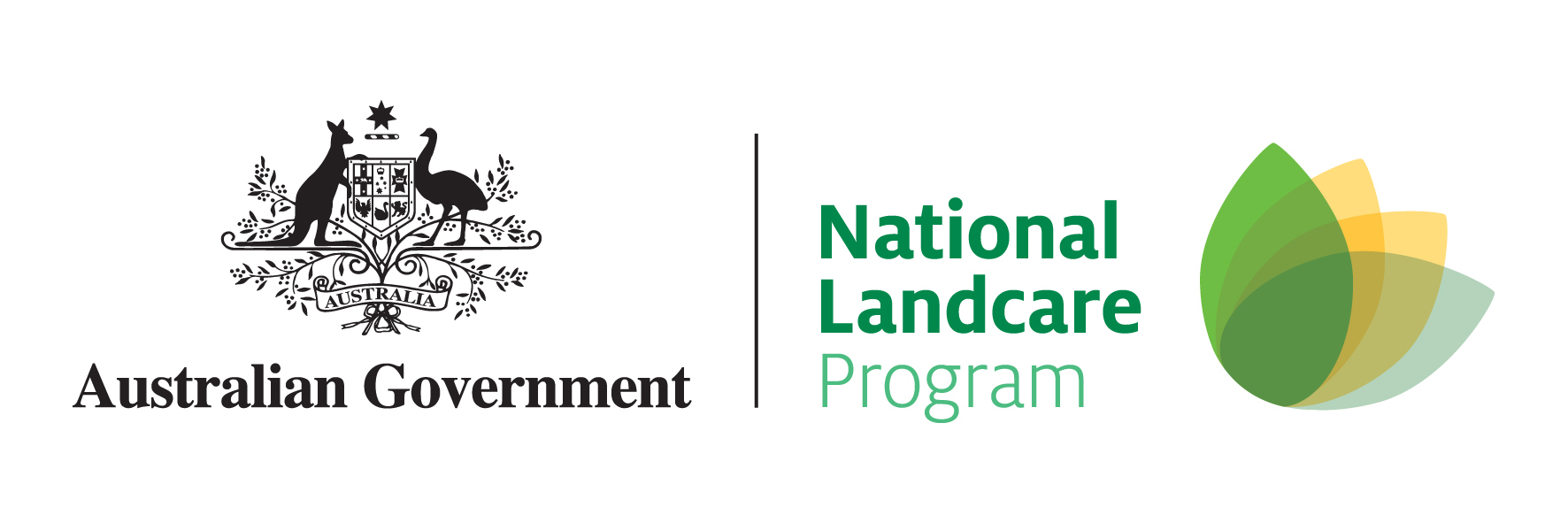Saltmarsh Restoration in Pitt Water-Orielton Lagoon
A legacy of changing land use, land clearing and livestock grazing in and around saltmarsh at Pitt Water-Orielton Lagoon has changed landscape function. Sections of saltmarsh have become stranded from tidal inundation, altering the connectivity of fish habitat and exposing waterways to increased nutrient inputs. This has knock-on effects for many of the recreationally important fish that depend on this site, including mullet, Australian salmon, and greenback flounder.
NRM South worked with project partners and landholders to restore saltmarsh habitat in Pitt Water-Orielton Lagoon. Works were designed to prepare for a planned restoration of natural flows and provide protection to modified saltmarsh habitat. At Pitt Water-Orielton Lagoon, historically significant saltmarsh has become degraded over the decades. This saltmarsh habitat is important for recreationally valuable fish species and our saltmarsh restoration project worked to bring benefits to fish productivity by improving fish nursery habitat.
Our Approach
Working in partnership with OzFish Unlimited and the University of Tasmania we;
- Fenced saltmarsh to protect from livestock trampling and nutrient inputs;
- Restored previously cleared woody vegetation and native grasses, providing buffer plantings for the saltmarsh microclimate from agricultural activities;
- Engaged and involved the local recreational fishing community in on-ground works and monitoring activities to build the capacity of recreational fishers to participate in fish habitat stewardship and;
- Assessed populations of recreationally important fish species and their habitat before and following restoration activities and identified future engagement and management opportunities.
PROJECT PILLARS PWOL
Background
This project worked with project partners and landholders to restore essential fish habitat in the saltmarshes of the Pitt Water-Orielton Lagoon Ramsar site. Works were designed to restore natural flows and provide protection to modified saltmarsh habitat.
At Pitt Water-Orielton Lagoon historically significant saltmarsh has become degraded over the decades. This saltmarsh habitat is important for recreationally valuable fish species and our saltmarsh restoration project worked to bring benefits to fish productivity by improving fish nursery habitat.
A legacy of changing land use, land clearing and livestock grazing in and around saltmarsh at Pitt Water-Orielton Lagoon has changed landscape function. Sections of saltmarsh have become stranded from tidal inundation, altering the connectivity of fish habitat and exposing waterways to increased nutrient inputs. This has knock-on effects for many of the recreationally important fish that depend on this site, including mullet, Australian salmon, and greenback flounder.
Flora surveys
In March 2022, NRM South worked with the University of Tasmania to set up a baseline survey for vegetation monitoring at Richmond Park, situated in the Ramsar-listed Pitt Water-Orielton Lagoon complex. The survey collected information on vegetation cover, composition, and height.
Another survey was undertaken in May 2023.
Fish surveys
Fish use saltmarsh as nursery habitat, and the future bund removal will restore their access to the site, and the health of the vegetation they depend on.
Fauna surveys were conducted in June-August 2022 by the University of Tasmania. Over six evenings from June to August, fyke and seine nets were used to sample fish on the saltmarsh. Nets were deployed on either side of the bund, to get an understanding of what impact the bund may be having on fish communities.
Most of the fish sampled in winter 2022 were smallmouth hardyheads, yelloweye mullet, and plenty of shrimp. We also caught a few gobys, greenback flounder, common galaxias, short-finned eels, a soldierfish, and several crabs. The length of each fish was recorded before they were released.
In June 2023, a fauna survey with UTAS was carried out to track changes across seasons and years. Further fauna surveys will occur at this site as part of the Blue Carbon project.
Hydrology
Restoration of natural hydrology to the site will occur under the Blue Carbon project, with the removal of a levee at the site planned for summer 2023-24.
Water levels across the site have been recorded using HOBO loggers, which automatically and continuously record fluctuations in water levels. Data was collected for an almost three-month period from June 2022, and another survey was completed in 2023. This will provide a robust baseline dataset of the site’s inundation prior to the removal of the levee.
Weed Control
African boxthorn (Lycium ferocissimum) and serrated tussock (Nassella trichotoma) are present at the project site. Both are Weeds of National Significance, and threaten the condition of the wetland.
NRM South engaged a contractor to remove African boxthorn by ‘cut and paint’ in a targeted 5.9 ha area, and spray serrated tussock where present across the 65 ha site.
Revegetation
Elevated grassy areas adjacent to the saltmarsh were revegetated with native woody plants and grasses. Revegetation will restore the microclimate and consequently promote natural regrowth of saltmarsh vegetation species. Technical Forest Services carried out this planting in June 2023.
Fencing
Access to the restored wetland and revegetated fringing habitat has been controlled across up to 3.9 km of fencing, which permanently excludes stock, to protect important saltmarsh vegetation communities and Aboriginal cultural heritage from trampling.
Project Achievements
- The saltmarsh has been protected from stock access through 2.1 km of new fencing, and weed control and revegetation was carried out in May-June 2023.
- Baseline flora, fauna, and water level data has been collected so we can track change over time after the restoration works.
- Eight community engagement events were held, including on-site vegetation survey events.
Project Achievements
2.1 km fencing
5.9 ha weed control
5.9 ha revegetation
8 surveys
8 community events
What's Next
This project wrapped up in June 2023. In 2022, NRM South received funding under the Australian Government Department of Climate Change, Energy, the Environment and Water’s Blue Carbon Ecosystem Restoration Grant to expand and continue works on this site. Thanks to this, we will continue to work with key stakeholders to build on the significant achievements that have been completed over the past three years and beyond. Learn more about our Blue Carbon project here.
